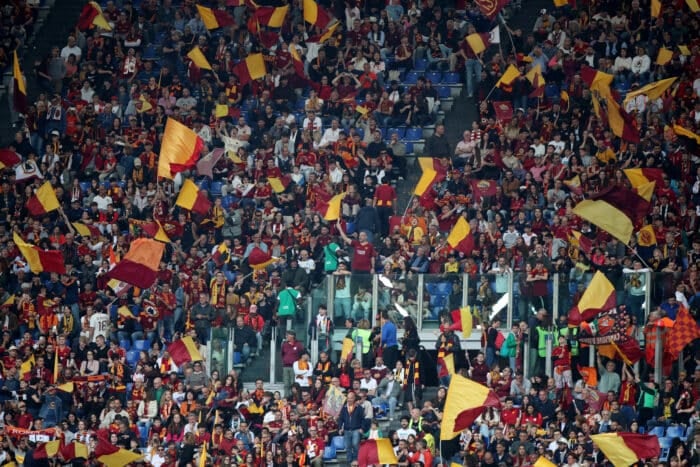AS Roma was founded in 1927 to challenge the dominance of the big teams from northern Italy. In Serie A, Roma remains a top-six regular – but despite sponsors as varied as online casino Ontario, car manufacturers and major airlines, it still struggles to compete financially with Juventus, Inter and Milan.
Has it succeeded on the pitch during this time? Its only Serie A title in recent decades came in 2001 under Fabio Capello’s side with legends like Totti, Batistuta and Cafu.
Are nine Coppa Italia titles and two Supercoppa Italiana trophies adequate return for the capital city’s figurehead team? In Europe, the club has reached the European Cup final in 1984 and the UEFA Cup final in 1991 – but lost both.
More recently, Roma won the inaugural UEFA Europa Conference League in 2022 under José Mourinho.
In many experts’ eyes it is actually over-performing considering its financial handicaps. The club finished sixth in the 2023–24 season and qualified for European competition.
Roma manager was Daniele De Rossi, who took over in early 2024 before his sacking led to Claudio Ranieri stepping in as steward towards the end of the season. His current key players include Paulo Dybala and Lorenzo Pellegrini.
Monetary Challenges
Behind these challenges on the pitch there are struggles off the field too. The club has long battled to match the huge financial power of its northern rivals.
Roma was long under the control of the Sensi family, who ran the club from 1993 to 2011. Financial problems plagued their final years.
In 2011, American businessman James Pallotta led a consortium to acquire Roma. He made it the first Italian club with majority foreign ownership.
Despite ambitious plans, including a new stadium project, the club ran up consistent losses. In 2020, Dan Friedkin, another American billionaire, bought Roma for €591 million.
The club’s debt stood at over €200 million at the time. Friedkin pledged financial stability but had inherited years of overspending and poor transfer return.
Improving the Finances
Roma operates under close financial supervision. UEFA fined the club in 2022 for breaching Financial Fair Play rules.
In response, Roma adopted a stricter financial model. Player sales, wage control and loan deals now dominate its strategy.
The club posted a €219 million loss in 2021–22 but reduced it to €120 million in 2022–23. It relies heavily on UEFA competition revenues and commercial growth.
Sponsorships with Qatar Airways and Hyundai ended; new deals have included Riyadh Season and Emporio Armani.
Friedkin injects capital when needed but long-term plans hinge on the team’s European performance and stadium development.
Roma’s Plans
Roma has long played at the Stadio Olimpico, which it shares with rivals Lazio. Built in 1953, the iconic stadium is owned by the Italian Olympic Committee and this is limiting for Roma’s matchday revenue.
Plans for a privately owned stadium began under Pallotta in 2014 but collapsed in 2021 due to political delays. Friedkin relaunched the project with a new site at Pietralata, northeast of Rome.
The proposed 55,000-seat venue aims to open by 2027. It promises modern facilities, improved transport links and year-round commercial use.
If approved, it would transform Roma’s finances by boosting ticket sales, naming rights and event hosting.
Building a Commercial Team
AS Roma is strengthening its commercial partnerships to boost revenue.
In October 2023, the club secured a two-year front-of-shirt deal with Riyadh Season, replacing the SPQR logo. The agreement includes friendly matches in Saudi Arabia and is reportedly worth €25 million.
In July 2023, Roma rejoined forces with Adidas, becoming an ‘Elite Team’ from the 2025–26 season, joining top clubs like Real Madrid and Bayern Munich. Additionally, JD Sports will become the Official Retail Partner from July 2024, expanding Roma’s merchandise reach across Europe.
On the women’s side, IBSA Italy became the first exclusive jersey sponsor in 2023–24. These strategic partnerships aim to enhance Roma’s brand and financial stability.
With these sort of high profile links Roma aims to become a consistent Champions League club while maintaining financial stability.
The new stadium, set for 2027, is key to unlocking long-term growth.
On the pitch, the club seeks to develop young talent and reduce dependence on expensive transfers.
Competing with Italy’s financial giants and Europe’s elite remains a major hurdle. Revenue must grow through digital outreach, global sponsorships and matchday improvements.
Friedkin’s backing provides stability but Roma needs on-field success to attract investment. The challenge now is to turn the team’s flashes of success on the pitch into sustainable, year-on-year progress.
The long-term goal is to become THE Italian club. And to do that, Roma needs more than a great goal scorer or inspiring manager.
It needs to overhaul the financial lead built up over many decades by its northern rivals. That’s when Roma will be able to fully compete on the pitch as an equal.





